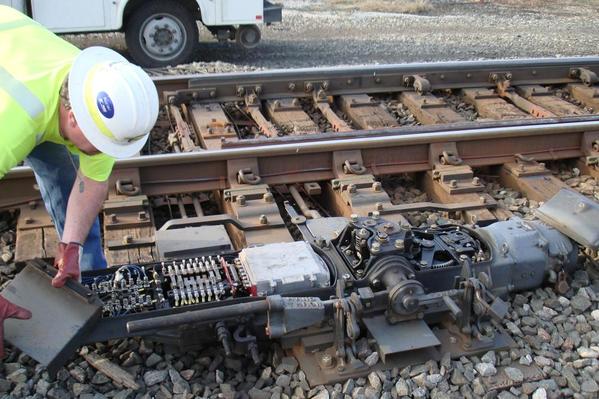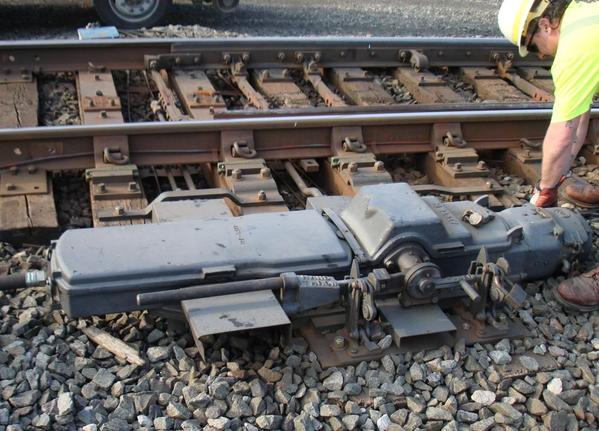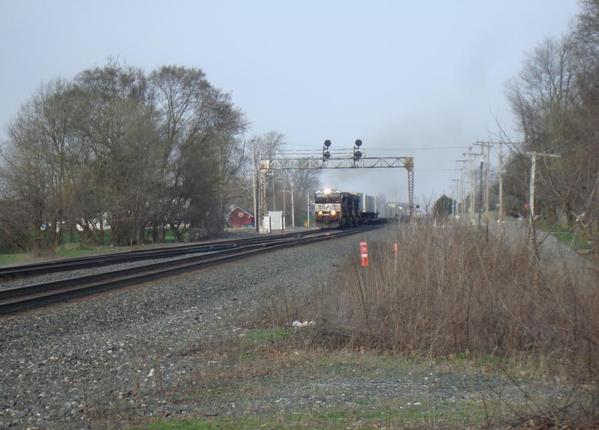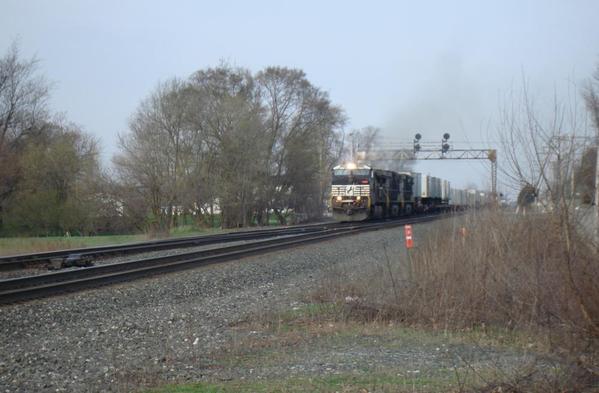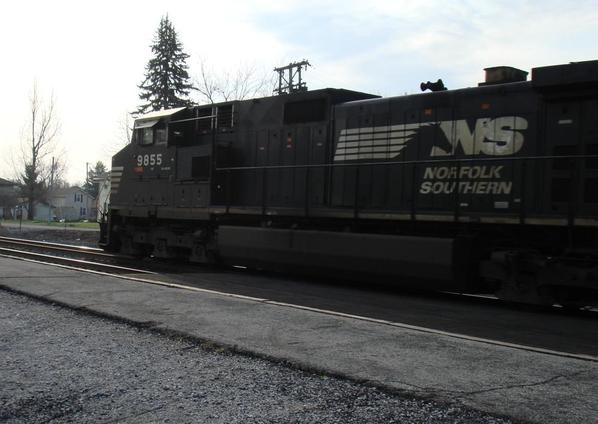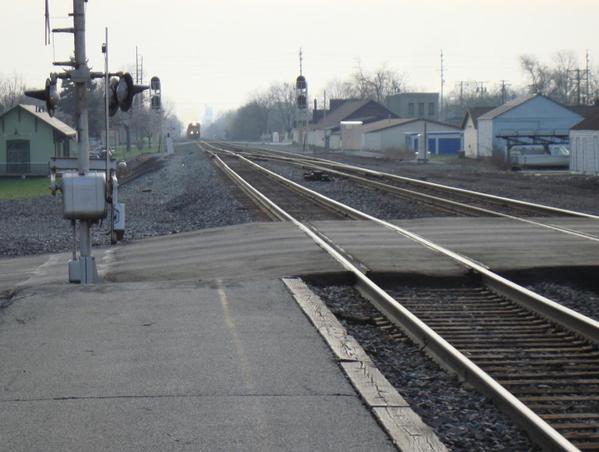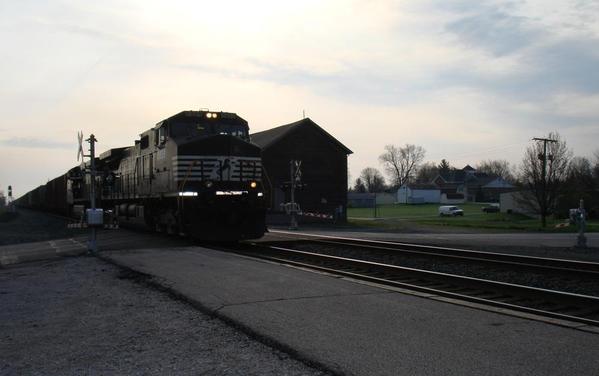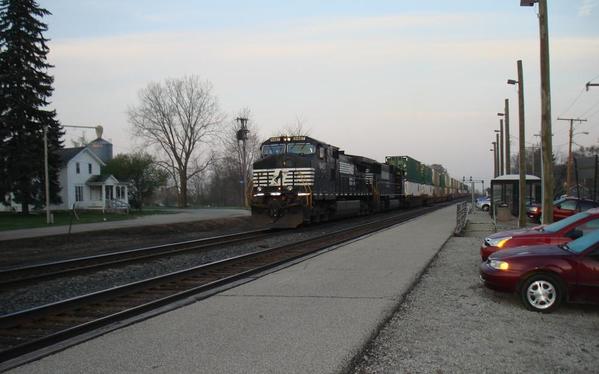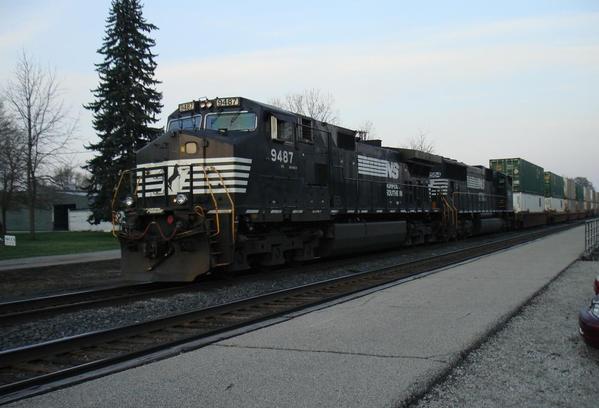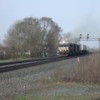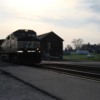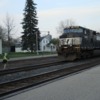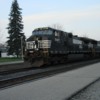Early this week, my wife Judy and I went to visit her family in northern Indiana. While there, I went to the Amtrak station in Waterloo. I did not see any Amtrak trains, but saw several Norfolk Southern freight trains and a lot more!
When I arrived the first day in mid morning, there was a NS maintenance man working on a switch machine. I had seen and photographed the machines before, but not like this – he had removed the covers from the machine and its inner works were exposed. I even saw it operate with the cover off! I asked him if I could take a few pictures, and he said that it would be OK. Here are some:
After I took the pictures, and within a span of less than 30 minutes, I saw four manifest trains – two west bound and two east bound. I took several pictures of the first three, all of which were headed by three NS diesel engines with the familiar black finish. So I put my camera away and decided to just watch the fourth train. (I can’t really appreciate the trains when I am taking pictures.)
Of course, that fourth train was different. The lead engine was a NS, but the second and third engines were BNSF! Oh well . . .
When I arrived the second day there was a man wearing a yellow vest standing by the tracks on the opposite side where I had parked. He looked at me sort of puzzled, so I told him that I was a railfan I just wanted to watch the trains. He crossed the tracks and came over to talk.
About that time I saw, in the far distance, the headlight of an east bound train. We continued to talk and he asked me if I was familiar with the steam engine that runs out of Fort Wayne. I told him that I was, the Nickel Plate Road Berkshire 765 that is run by the Fort Wayne Railroad Historical Society. He then told me that he operates that engine!
Right after he said that he said that he had to catch the train that was coming and which by now was not that far away. So he crossed the tracks and waited. The freight trains came to a stop after a very long decelerating approach, and the man climbed aboard and into the engine through its front door.
I took several pictures of the aforementioned, and did not remember that my small point-n-shoot camera had video capability until the man was inside the cab. So I took a short video from that point.
Perhaps all of the above is old hat to many of you guys, but I really got a kick out of it and thought it would be nice to share.
Alex





